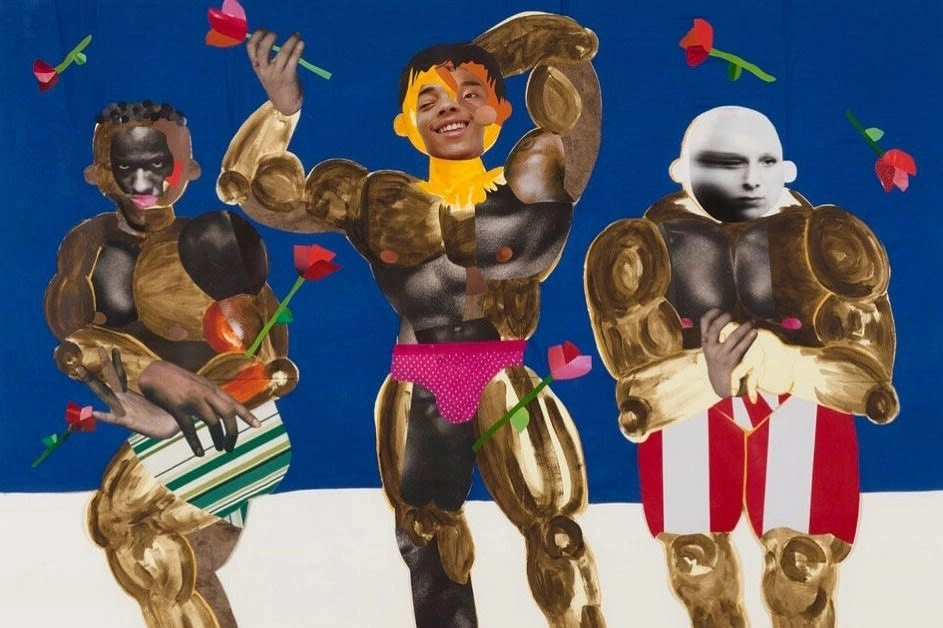Sport creates limits: of identity, the human body, it prescribes boxes in which the athletes are enclosed, and their parameters are judged in accordance with uncompromising standards. Many artists, however, view sport as a topic for their practice and try to subvert these limits to unmoor sporting performance of the “natural” and to point out its constructed character.

The world of sports is binary by tradition and if you want to find your role in it, it needs to be female or male - these are the conditions for taking part in sports competitions. In a world of clear rules where humans are reduced to prototypes that have to fulfill their function, gender nonconformity, or questioning identity and clearly defined sexual orientation seems to be a brave undertaking. And art is an ideal space for its realisation. It defies definition in and of itself, and perhaps that is exactly where its identity lies. It offers space to resist rigidity, and it defies attacks of the norms it accepts only to defeat them once and for all. Queerness contains similar mechanisms in its existence - it seems to refuse the status quo and leaves space for what is unseen and undefinable, bringing a fresh wave of freedom.
Artist duo Marriage (Wu Ingrid Tsang, Math Bass) in the video piece Soccer (2004) acts as a couple of characters whose sexuality and gender cannot be easily grasped by the audience. In their distinctive performative jerseys and pads, they give a strange impression of comicality and their clumsy play is almost embarrassing. The activity in the video looks like a caricature of a football training session, but it seems that the characters cannot be accused of deliberate parody. Their immature demeanor, confusion and unsuitability for a serious game of football seem more like a side effect of their strange naivety, even infantilism. Their attempts to achieve the gestures and movements of serious footballers clearly fail even in their origin.

This could be seen as an analogy with the experiences of people who fall outside the traditional gender binary and find it difficult to fit into a heteronormative society, despite a genuine desire and effort to do so. On the contrary, such people will be seen as strange, not fitting into the norm, deviant. There is a pressing presence of queerness and gender expression beyond female or male implied in the work, and it is impossible to resolve clearly what identity this is meant to be. The unifying motif of queerness and sport here is openness: the players are in close proximity to a game that has conventionally established rules, participating in a practice that "is supposed to look a certain way". However, it is here that the subversion of the established game is played out, precisely through failed attempts to apply its rules.
The body as a fluid category from which claims to sexually objectify disappear also appears in the work of Japanese tennis player and performance artist Yuki Kobayashi who exposes the body and seeks to normalise nudity. Especially in sport, he argues, it is untoward to evaluate bodies and their parts as sexual symbols. In his works, where he often shows his male body in clothes that are socially coded as feminine, he criticises certain clothing regulations in sports competitions. In doing so, he makes visible the rules that not only navigate us to achieve a certain appearance based on how our bodies are judged by outside observers but also the mechanisms of power that control us to follow these rules.
.jpg)
Kobayashi explicitly disagrees with such pressure, aware of the connotations that female and male bodies have, those that cannot be gotten rid of. At the same time, he tries to transcend this social aspect and show that erotic overlays and perhaps even signs of gender can be washed away from the body if we understand it for what it is - skin, muscles, fat, bones, organs, physiological proportions and functions: 'Let's just see it as a real body – this is what you’re hiding under the clothes you choose. It's a body and you can't choose how you're born. That's your original skin."
.jpg)
The artist uses his own body as a canvas; he directly encounters the audience's perceptions through it in his performances, he has a direct opportunity to influence human emotions and at the same time to reflect and experience them himself. In the performance Dojo Tofu (2022), for example, he is dressed in a pink sports bodysuit and depicts the ritual dance of the Haka, popularised by New Zealand footballers, slapping his thighs until his skin is covered with red welts. This dance, coupled with the stereotypical image of the male warrior (phrases such as, "See my hairy body?" appear in the intimidating text), is shown in closeness with the incorporated feminine-coded outfit. To whom does this body belong? To what extent is this ownership denied to the subject (i.e., the person of whom it is a part of) in a situation where it is clogged with prejudices that construct an idea of the category to which it belongs?

Watch the video at this link.
The symbolism that the body carries with it is also pointed out by Afro-Latin-American artist Clotilde Jiménez, who took up boxing at the age of 13 and thus became part of a family lineage in the sport. Coming out as bisexual marked the moment when he could make public, through his collages his experience of physicality as both an athlete and a queer man.

Jimenéz provides insight that masculinity is not in strict opposition to stereotypically understood femininity and does not necessarily imply a connection to heterosexuality. "There’s something queer about people, and most particularly men, building their bodies, grunting in the gym, rubbing oil on each other, they put the little neon pink thong to get on stage to be stared at by other men." Here, the author sees the male body in sexual terms and shows what may originally have macho connotations - the muscular and strong body as a masculine element connected to heterosexuality - in a queer perspective.

Male hegemony (stereotypical image of men dominating over women) that bodybuilders could visually represent is subverted by highlighting touches exchanged by members of the same sex, pink underwear or the act of performing for other men. The way one views a bodybuilder’s body is suddenly turned to a new angle. Jimenéz reveals a strange kind of intimacy that lies in shared breath and high heartbeat frequency when training in a gym with a sparring partner.

The artist composes his works from fragments of wallpaper, clothing, magazines and Mexican paper. He shows the constant flux of identity through overlaying these elements and fragmenting perspective where the viewer themself builds the image from multilayered composition which is then changed again by focusing on a singular part. „People put things on you, sometimes you put them on yourself, and then you remove them. We’re constantly changing, evolving“

In the case of Soccer, queer bodies represent an obvious opposition to the gender binary, while also projecting an image of asexuality. Kobayashi wants the body in the sporting arena to be rid of inappropriate sexual content that allows those who hold power to exert violence on certain bodies to maintain their position. Jiménez, on the other hand, celebrates the sexuality of queer people by granting it to bodybuilders and disrupting their homogenously masculine ideal. This raises the question of whether the sexual objectification of bodies is problematic in any case, and what can even be considered as such. Kobayashi criticizes the uproar that partially visible female nipples cause if a female player does not wear a sufficiently covering bra. His approach implies a desire to asexualise bodies in sport, while Jiménez convinces us otherwise - the body is always also a sexual object in sport, and from his position the sexuality of such a body can be celebrated. On the one hand, Marriage deny heterosexuality as the only possible sexual orientation in conjunction with the theory of the two sexes; on the other hand, they raise the question of the necessity of determining sexuality at all.

Watch the video at this link.
The original critique of the conception of humans as objects with the function of fulfilling the needs of others is based on disagreement with a patriarchal system that establishes inequalities between the sexes, with (heterosexual) men ruling with privilege over others. They also exercise their power in the "male gaze", when they seem to take hold of women by seeing them only as a source of their own pleasure. It is then, of course, a question of how to deal with the "objectification" of people who are on one level in the established system. This also raises the question of what role sport actually plays in relation to the body, sexuality and queerness. And whether understanding queer beings and their bodies through the prism of sex can reinforce their identity and show society that such bodies are equal to those falling into heteronormative boxes, visible and free to move on the identical sporting field.
https://www.clotildejimenez.art
https://www.yukikoba.com
https://www.instagram.com/mathpearlbass/
https://www.instagram.com/wu_tsang/





